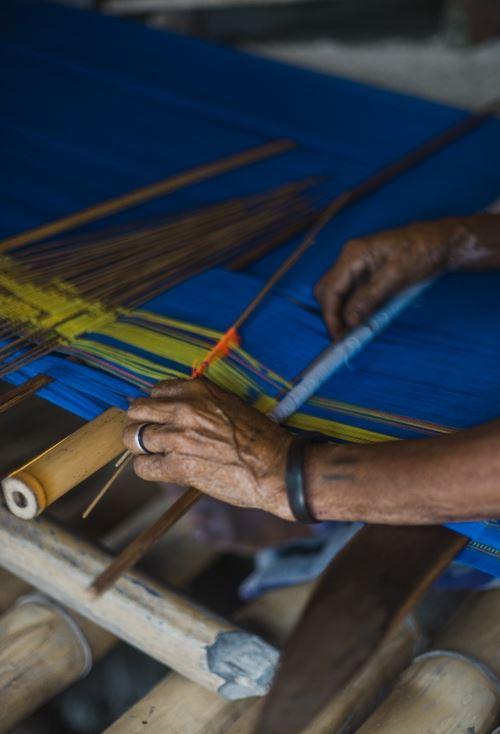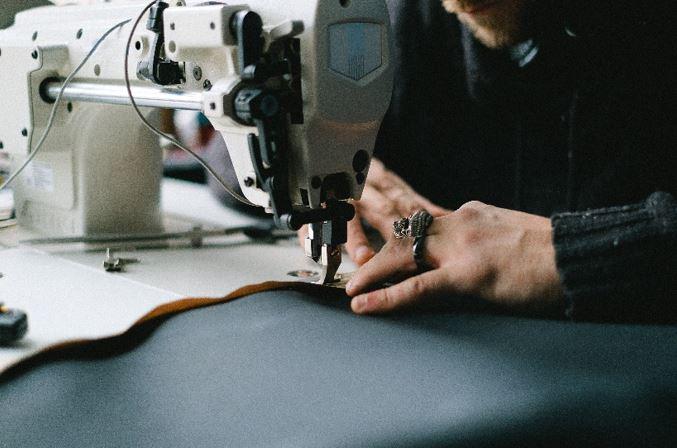Ecological transformation in the fashion industry: Sustainable fashion - ARTICLE GATE
Textile is among the sectors that cause the greatest damage to the earth .
Consumption habits, rapid production, international marketing and logistics networks are among the main reasons for the traces left by the fashion industry on the environment.
The fashion industry accounts for 8 to 10 percent of global greenhouse gas emissions.
The cost of the fashion industry to the environment
The fashion or textile industry has a large share in the economy of many countries. According to 2016 data, approximately 75 million workers are employed in the fashion industry .
The rapid development of the fashion industry has also rapidly increased the negative environmental effects caused by the industry.
The industry accounts for about 8 percent to 10 percent of carbon emissions caused by humans. This rate means more carbon emissions than all international flights and maritime traffic .
The fashion industry has a huge market in the world. This means that a garment produced is available for sale all over the world.
For example, a T-shirt made in Indonesia may be offered for sale in Iran. Or the cotton collected in Çukurova can be processed abroad, made into clothing and sold in the Turkish market again.
We are talking about a piece of clothing that travels the whole world. During the logistics stages, a lot of carbon is released.
Textile products do not harm nature only during the production phase. While the purchased clothes or by-products are washed in the washing machine, the dissolving microplastics are mixed into the wastewater.
This pollutes the rivers, seas and oceans. This is because fast fashion uses too much plastic and chemicals.
The worst part is that most of the clothing and side fashion items purchased end up in the landfill every year.
water footprint of fashion
Water footprint (water pootprint) is expressed as the volume of water consumed due to human actions.
The fashion industry is among the most water-consuming industries in the world.
This is because a lot of water is needed when producing a garment.
Cotton, in particular, requires a lot of water during the growing phase. It takes 2700 liters of water to produce an average cotton t-shirt .
If we take into account that an adult person consumes an average of 3.5 liters of water per day, this amount corresponds to the daily drinking water of approximately 700 people.
Working conditions of textile workers
As a result of fast fashion, workers are employed with long working hours and low wages.
Especially underdeveloped countries are facing the devastating consequences of the global fashion industry.
Human rights violations in today's clothing factories are supported by inadequate laws.
The demolition of the garment factory in Bangladesh in 2013 exposed a truth about textile workers all over the world.
The shops and bank downstairs were closed after cracks were identified before the building collapsed.
The Dhaka Factory had told its workers to come to work the next morning .
The tragic accident, in which 1134 people lost their lives, shows the brutal working conditions of the fashion industry, especially in low-income regions.
In fact, if you look at the product Human rights violations in today's clothing factories are supported by inadequate laws.
ion facilities of world-famous brands, you will see that most of them are located in underdeveloped countries.
There are many reasons for this. First of all, these are countries where workers' rights are very limited and not protected by legal guarantees.
In these countries, the legal minimum wage is less than half of what it takes to live.
Accidents, injuries, diseases and fires are common in textile production factories.
In addition to this , physical and verbal abuse cases were also reported through the work carried out with the workers .
A sad reality about the fashion industry is child workers. We witness that too many child laborers work in underdeveloped and developing countries due to reasons such as the lack of need for too many qualified personnel and the search for cheap labor in factories.
There is even a work system in India called Sumangali, where girls are employed in textile factories for 3-5 years .
One of the scary things about the fast fashion industry is the animals used for clothing.
Animals are killed for their skin and imprisoned on farms for their fur. Sensitive creatures are forced to live in dirty and narrow spaces.
While thinking about animal exploitation in fashion, this whole animal industry; It is also necessary to take into account that human demands exist.
greenwashing , translated into Turkish as 'greenwashing', 'greenwashing' or 'greenwashing' ; As the name suggests, it refers to the situation of making a product, company or campaign that is not actually green - that is ecological - as if it is ecological.
An example of this is the sustainability campaigns of giant fossil fuel companies.
As in many industries, we are exposed to a lot of green dyeing in the fashion industry.
When the effects of the climate crisis were felt, big brands started to work on sustainability.
As a matter of fact, the sectors that cause the most damage to nature also carried out the biggest campaigns.
Because of that; We frequently come across 'sustainable' and 'ecological' advertisements of fashion brands that have global markets and are even the initiators and representatives of fast fashion in the world .
First of all, in order to learn that a brand is truly 'sustainable', it is necessary to evaluate that brand holistically.
A brand that produces recycled clothing, on the other hand, may be producing leather clothing.
Or it may not be using renewable energy sources in its central store, but not doing the same in its less-visited stores.
Therefore, it is important to consider the entire supply chain of the brand.
Slow fashion versus fast fashion
The fast fashion approach that started to spread all over the world in the 1980s is unfortunately unsustainable.
The use of limited natural resources is hampering growth in the fashion industry.
Sustainable fashion is a fashion movement that focuses on getting out of this predicament.
The concept known as 'ecological fashion', 'sustainable fashion' or 'slow fashion' actually expresses the opposite of fast fashion.
Sustainable fashion ; demands a transformation in the behavior of fashion makers, designers, manufacturers and consumers.
This transformation; it includes a simpler, fairer, ethical, sustainable and healthy consumption approach.
The fast fashion economy is not built on fair trade systems. In the production and distribution phase, workers get the least share of the cake.
A garment produced by fast fashion is likely to be less expensive than a garment produced by slow and fair fashion. But this cost can be quite misleading.
A garment produced in the capitalist clothing industry has a shorter lifespan.
This is because brands are actually constantly developing strategies to market new products. Thus, consumers are encouraged to use a disposable culture.
The consumer may think that he actually profits from the fast-produced clothing. If the environmental pollution and human health effects behind this suit are taken into account, the actual cost of the product is billed to the entire planet.
Ethical fashion encourages underproduction and long-term use
Sustainable fashion is actually a conservative fashion concept. The plain, natural and old one; protects against the new.
Traditional fashion would transform in periods of ten years.
For example, the concepts of 70s, 80s and 90s fashion were used. Therefore, there was no harm in using similar products for years.
Today, we are witnessing that the fashion sense is changing very rapidly. A product may be outdated until the next season.
As a matter of fact, the principle of less production and long-term use should be adopted, just as in previous years, in order to maintain fashion.
The use of second-hand and healthy products should be encouraged.















No comments